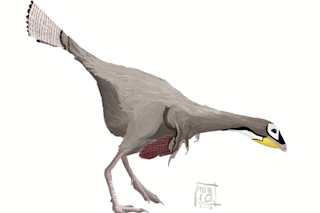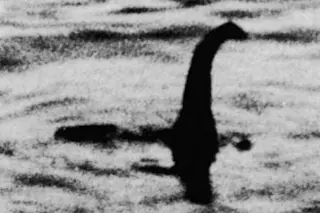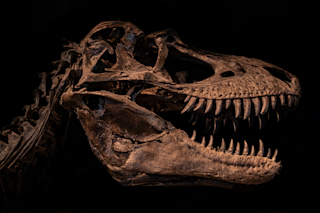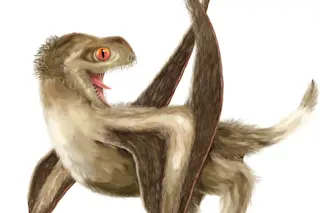Fierce-looking marine reptiles called plesiosaurs cruised the ancient seas for millions of years during the Mesozoic Era. With their long, sharp teeth, plesiosaurs were obviously predators, but researchers have never had any solid proof of what the animals ate. Now they've found a fossil plesiosaur in a riverside cliff in northern Hokkaido, Japan, that appears to have perished with a bellyful of shellfish. The 93-million-year-old fossil is missing its skull, but lying on top of what would have been its stomach were the jaws of about 30 shellfish called ammonites. Geology graduate student Tamaki Sato of the University of Calgary doesn't think the ammonites accumulated there by chance. "The high concentration of the jaws is unusual," she says. The jaws are tiny, each only a fraction of an inch long, and there was no trace of the ammonites' hard outer shells. "We suspect this is due to stomach acid or preferential selection by the plesiosaur," says Sato. The plesiosaur, which may have been as much as ten feet long, had slender teeth, unsuited to crushing ammonite shells, so Sato thinks it gulped down its tiny prey whole.
A Bellyful of Jaws
Discover the fascinating dietary habits of marine reptiles called plesiosaurs, evidenced by a fossil found in Hokkaido.
More on Discover
Stay Curious
SubscribeTo The Magazine
Save up to 40% off the cover price when you subscribe to Discover magazine.
Subscribe













